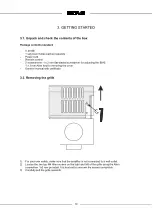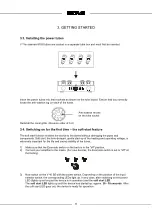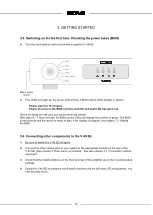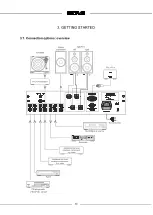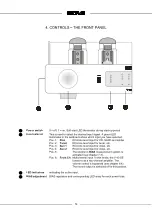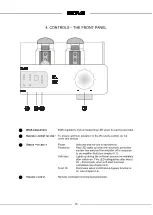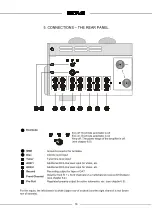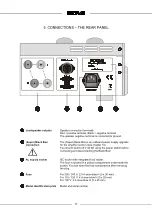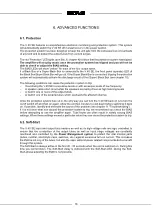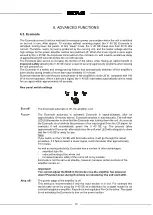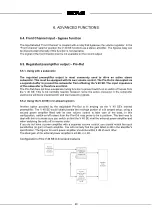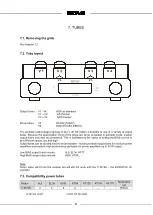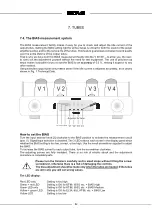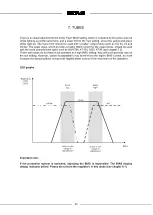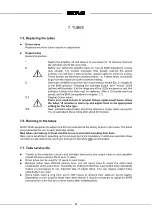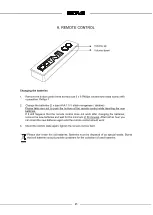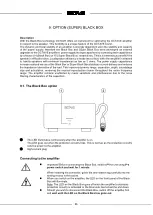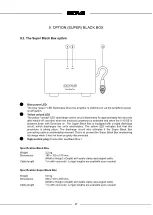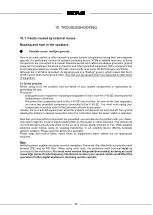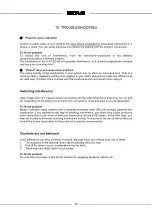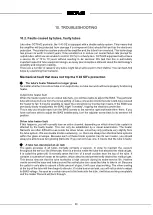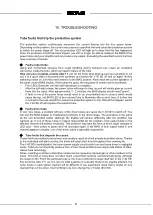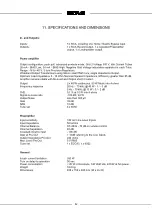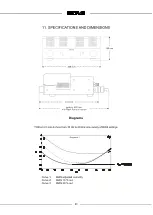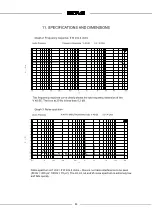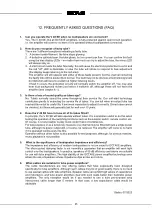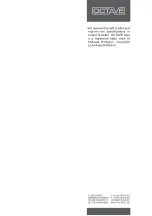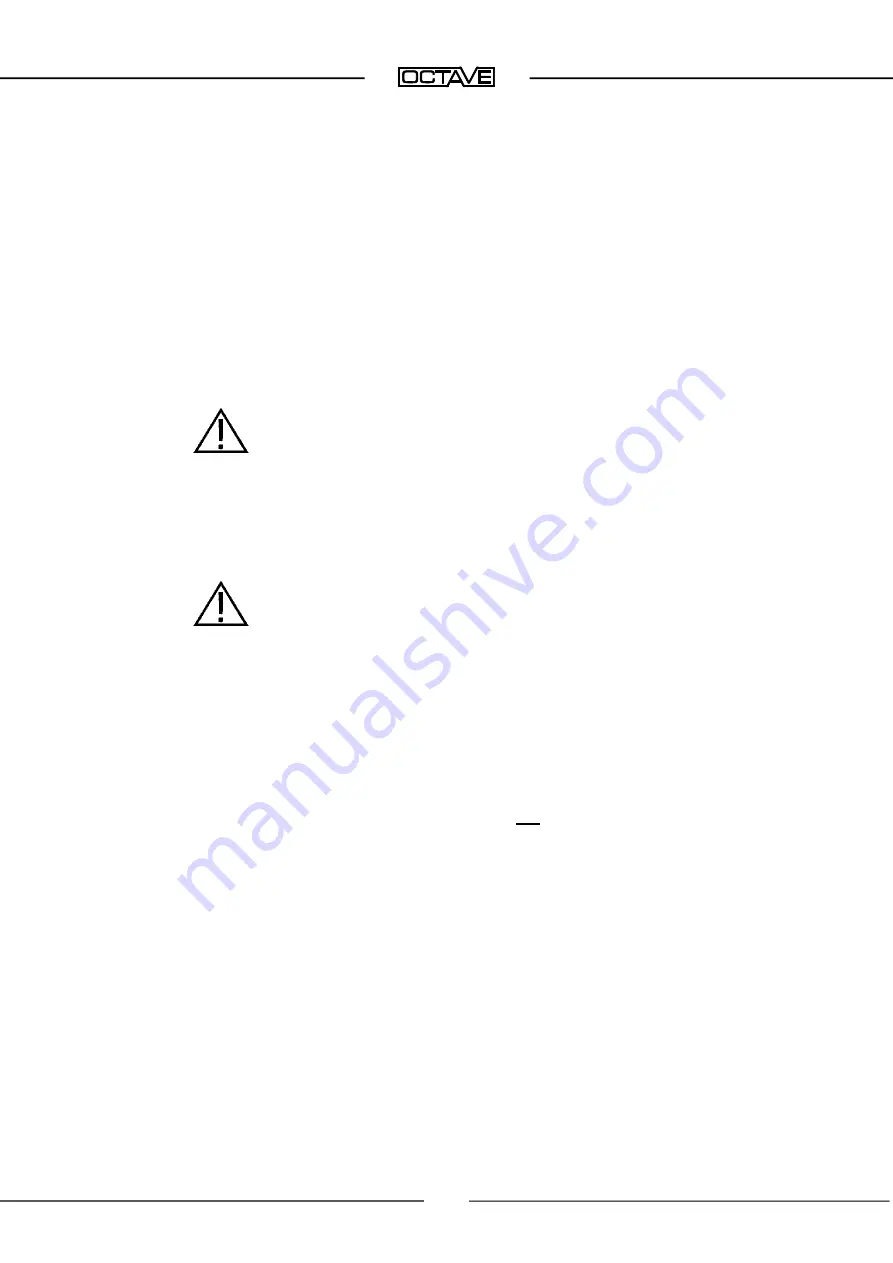
24
7. TUBES
7.5. Replacing the tubes
Driver tubes
Replacement driver tubes require no adjustment.
Output tubes
General procedure:
1.
Switch the amplifier off and allow it to cool down for 10 minutes. Remove
the old tubes and fit the new ones.
2.
Before you switch the amplifier back on, turn all BIAS adjustment screws
(see chapter 7.3) counter clockwise (this greatly reduces the anode
current). You will hear a click when the screws reach the minimum setting.
These screws are three-turn potentiometers, i.e. it takes three revolutions
to go from the maximum to the minimum setting.
3.
Switch the amplifier on and turn the mode selector switch [No. 2, chapter 4]
to the BIAS position. Following the soft-start phase, all 4 "minus" LEDs
(yellow) will illuminate. If at this stage any of the LEDs are green or red, this
indicates a faulty tube that must be replaced. After a 10-minute warm-up
period, set the BIAS as explained in chapter. 7.3.
3.1.
Original Octave tubes
There is no need to burn in original Octave replacement tubes. Allow
the tubes 10 minutes to warm up and adjust them to the appropriate
setting for the tube type.
3.2.
New, untested output tubes should be allowed a longer warm up period.
You should adjust these tubes after about 20 minutes.
7.6. Running in the tubes
All OCTAVE equipment is subject to a 48-hour soak test at the factory to burn in the tubes. The tubes
are preselected for use in each particular model.
New tubes can take up to three months to run in and start sounding their best.
Daily use is beneficial in speeding up this process but is not mandatory. Continuous operation does
very little to help reduce the running-in time and is therefore
not
recommended.
7.7. Tube service life
Thanks to the protection circuits and soft-start electronics, the output tubes in your amplifier
should achieve a service life of up to 5 years.
Driver tubes can be used for 10 years or even longer.
Because tubes have different service lives, you will never have to renew the entire tube
complement at the same time. The facility for setting the BIAS for each output tube individually
makes it unnecessary to use matched sets of output tubes. You can replace output tubes
individually if you wish.
Some tubes need a long time (up to 300 hours) to achieve their optimum sound quality.
Depending on how long the tubes have been stored, it may be necessary to adjust the BIAS
several times in the first two to three weeks after installing them.

